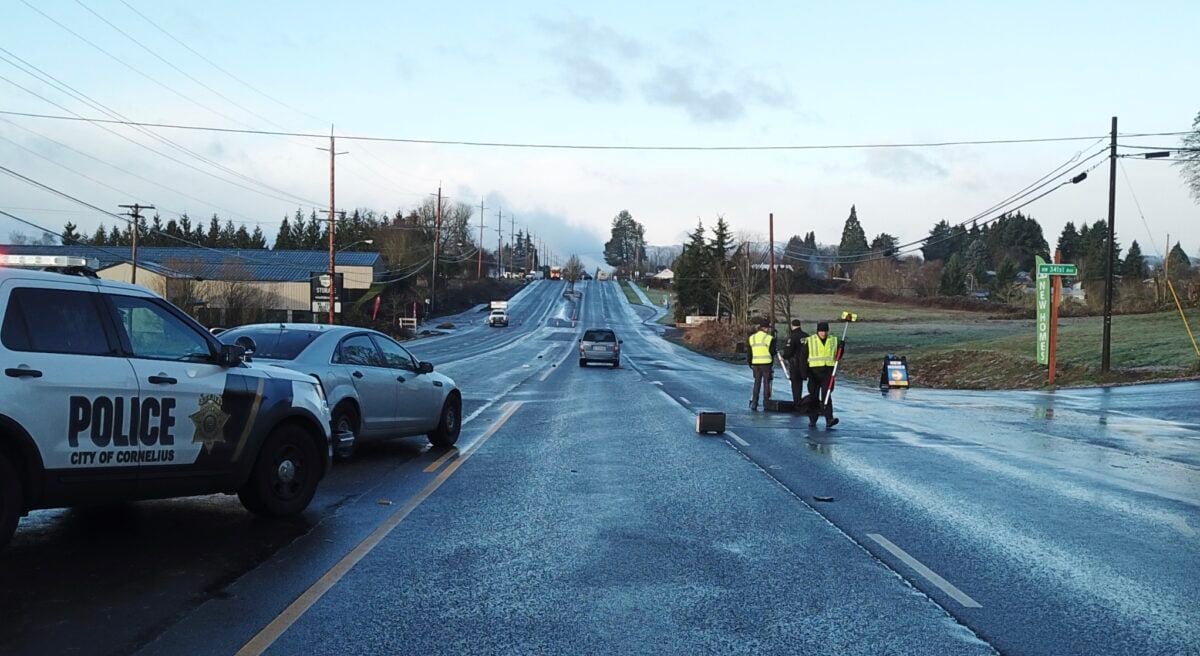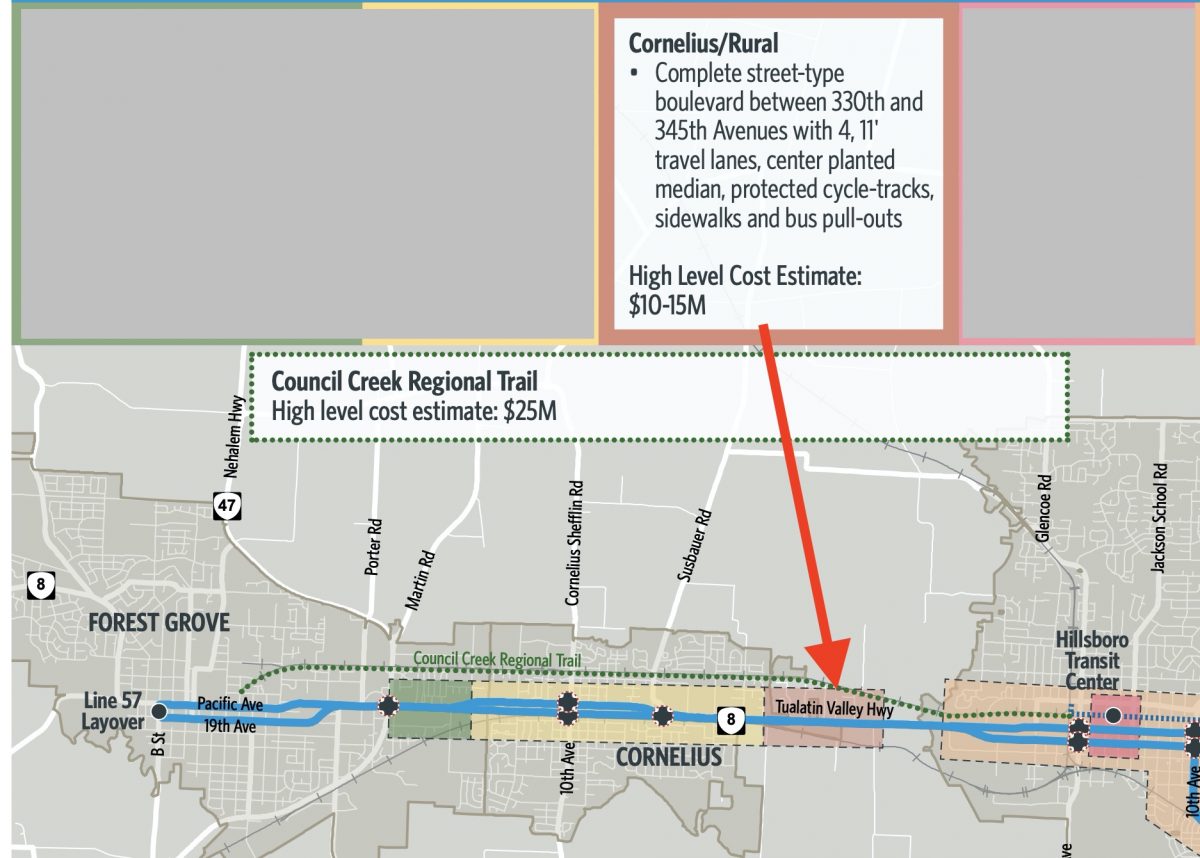
(Photo: Washington County Sheriff’s Office)
Policymaking can often feel far-removed from our everyday lives. Then there are times when we can connect current policy debates with matters of life-and-death with a short, straight line. This is one of those times.
“The Sheriff’s Office would like to remind people that it’s very dangerous to cross dark highways while wearing dark clothing.”
— Washington County Sheriff’s Office
This morning just before dawn there was a fatal collision on Tualatin Valley Highway and NW 341st, about two miles west of downtown Hillsboro. The Washington County Sheriff’s Office says a woman driving a 2005 Mazda minivan was driving westbound when her vehicle came into contact with 51-year-old Leslie Schmadeke. Schmadeke was attempting to cross the road on foot when she was struck. She died at the hospital a few hours later.
The Sheriff’s Office statement attempts to absolve the driver and place blame on Schmadeke. “The conditions at the time of the crash were dark and foggy, so poor visibility was likely a factor in this crash… The victim was also dressed in dark clothing,” reads their official statement. They then added, “The Sheriff’s Office would like to remind people that it’s very dangerous to cross dark highways while wearing dark clothing. Please consider wearing bright, reflective clothing or carrying a flashing light when out walking along busy roads in the dark.”
The statement didn’t mention that the driver should have had headlights to illuminate the street. Or if visibility was impaired, the driver should have been driving a slower, safer speed in order to not endanger others. The police also failed to mention that there are no sidewalks on this stretch of the highway and that the location where Schmadeke was killed is in the middle of 1.5 miles of highway without a single safe crossing (see below).

According to a comment from Schmadeke’s cousin, JenRenee Fairlane, Schmadeke didn’t own a car and never learned to drive. “She was an avid supporter and user of public transport.” “My uncle has been hounding ODOT about that dangerous strip for years,” she added.
This tragic narrative is far too common on TV Hwy, also known as Oregon’s State Route 8, which is one of the deadliest roads in the region. We’ve been sharing its trail of death and destruction since Bret Lewis was hit and killed back in 2011. In October 2018 we reported on two separate fatal crashes in one day. According to Washington County, the TV Hwy corridor had a whopping 3355 crashes and 16 fatalities between 2010 and 2014.
But yeah, let’s blame dark clothing.
Advocates and politicians have tried for years to make the road safer, but their hands are tied because it’s owned by the Oregon Department of Transportation, who treats it like a rural interstate rather than the multi-use urban connector it has become in recent years.
Asked about the crash this morning, Metro Councilor Juan Carlos González (who grew up along the corridor), wrote via Twitter, “Pains me to read about another injury. Absurd that a major arterial in the region is still at that standard.”
Advertisement

In addition to having the leadership of Councilor González, there’s more good news from Metro about TV Hwy.
First, the effort to hasten the transfer of TV Hwy away from ODOT and toward local control is moving along. While legislative attempts to force this transfer failed in 2015 and 2019, Metro is still working hard to make it happen. Their jurisdictional transfer assessment project is moving into its final selection phase (TV Hwy is still on the list) and the implementation plan is set to begin in September.
Also promising is that the section of road where Schmadeke was hit this morning is slated for $10-15 million in investment via Metro’s 2020 Transportation Funding Measure. According to Metro (see graphic above, PDF here), the section between Hillsboro and Cornelius is slated to become a “complete street” with narrower lanes, a planted center median, protected cycle-tracks, sidewalks, transit updates, and more. The entire corridor could receive nearly $600 million in funding if the current list of Tier 1 projects is approved by Metro Council and the measure is supported by voters in November.
Metro’s 2020 Transportation Funding Task Force meets tomorrow (Wednesday, 1/15) to figure out how to raise $3.1 billion needed to fix TV Hwy and make other big investments. It’s a matter of life and death. Stay tuned.
— Jonathan Maus: (503) 706-8804, @jonathan_maus on Twitter and jonathan@bikeportland.org
— Get our headlines delivered to your inbox.
— Support this independent community media outlet with a one-time contribution or monthly subscription.

